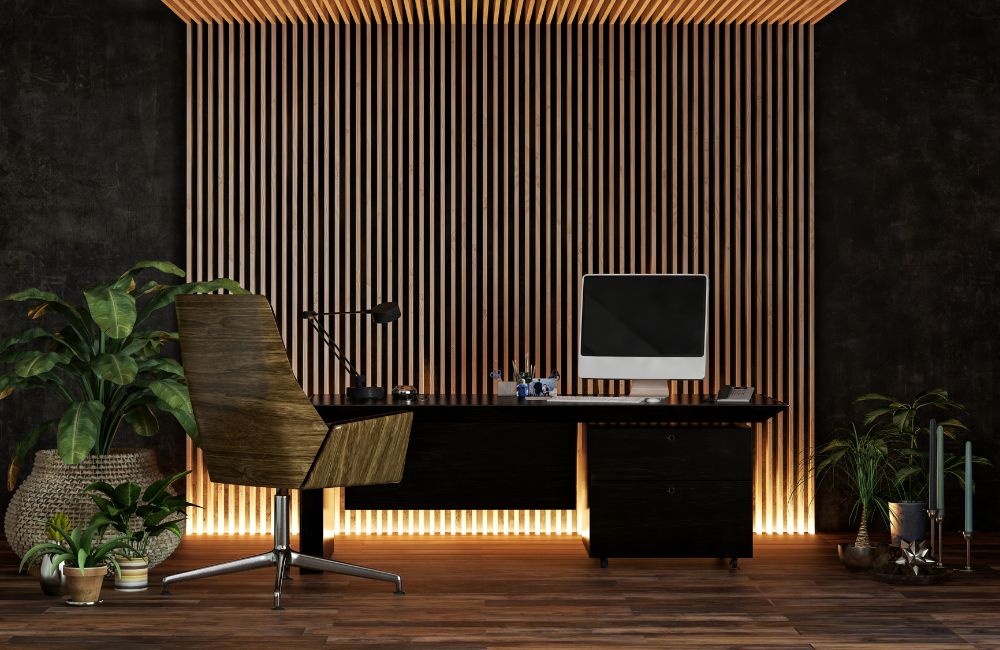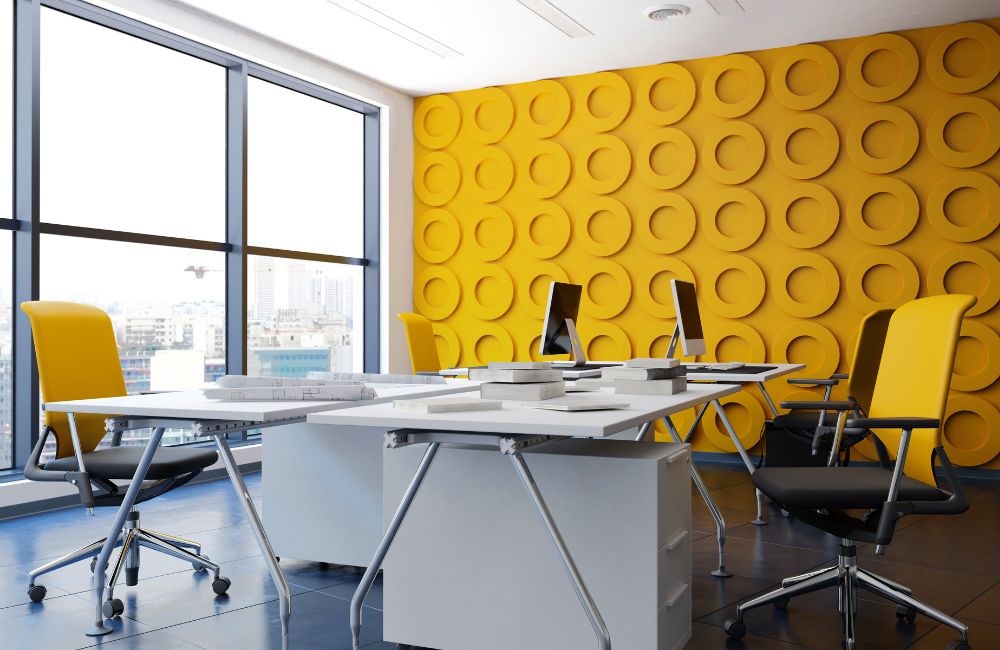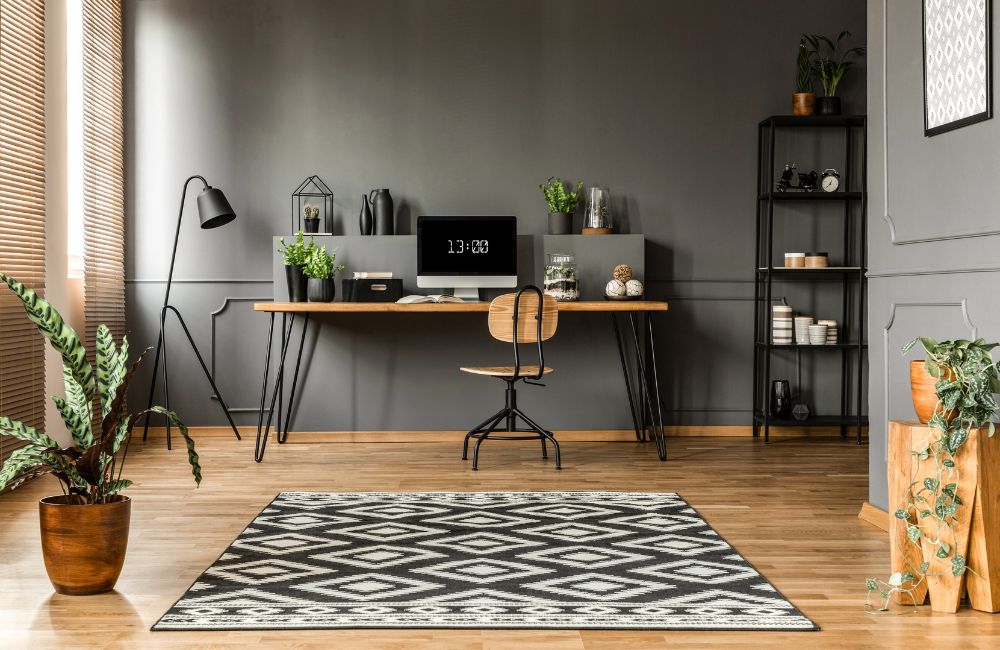
Key Takeaways
6 Common Home Office Furniture Mistakes and How to Fix Them
Frequently Asked Questions
Elevate Your Home Office with Stamford Office Furniture in New Haven, CT!
Key Takeaways✔ Prioritize ergonomic features over aesthetic appeal to ensure comfort and productivity. ✔ Incorporate a mix of natural and task lighting to prevent eye strain. ✔ Invest in functional storage solutions to keep your workspace organized and clutter-free. ✔ Use cable organizers to maintain a neat and accessible arrangement of wires. ✔ Measure your space and consider your work requirements before purchasing a desk. ✔ Add personal touches like artwork, plants, and mementos to make your workspace inviting. |
A productive and comfortable home office in New Haven, CT, involves more than just choosing stylish furniture. Many people unknowingly make common mistakes when setting up their workspace, which can hinder efficiency, comfort, and overall well-being. From selecting the wrong desk size to ignoring proper lighting, these errors can have a significant impact on your productivity and health.
Understanding and correcting these common home office furniture mistakes can transform your workspace into a haven of efficiency and comfort.

Creating a functional and comfortable home office is crucial for productivity and well-being. Here are six common home office furniture mistakes and how to fix them to ensure your workspace is both practical and inviting
When setting up a home office, it’s easy to get swept away by the latest design trends and sleek furniture pieces. While having a visually appealing workspace is important, prioritizing style over comfort can lead to long-term discomfort and decreased productivity. Non-ergonomic furniture can cause a range of health issues, including:
These problems arise because stylish furniture often lacks the necessary support and adjustability required for extended use. A beautiful chair without lumbar support or a desk that’s too high or too low can significantly impact your comfort and efficiency.
To create a comfortable and productive home office, it’s essential to choose furniture with ergonomic features.
Investing in ergonomic home office furniture has several benefits:
When selecting home office furniture, focusing on ergonomic features is essential to ensure comfort, health, and productivity. Here are key ergonomic features to look for when setting up your ideal workspace.
While ergonomic features are essential, it doesn’t mean you have to sacrifice style. Many manufacturers offer home office furniture that is both functional and aesthetically pleasing. Here are some tips to achieve a balance:
One of the most critical aspects of a productive home office is proper lighting. Many people make the mistake of either not having enough light or relying on harsh lighting that causes eye strain. Common issues include:
To avoid these common pitfalls, it’s essential to incorporate a mix of natural light, task lighting, and ambient lighting in your home office. This layered lighting approach ensures that your workspace is both functional and comfortable.
Natural light boosts mood and productivity while reducing eye strain and fatigue. It creates a more pleasant working environment, enhancing overall well-being. Tips for maximizing natural light include :
Task lighting focuses on providing light for specific tasks, such as reading, writing, or computer work. This type of lighting is crucial for preventing eye strain and ensuring you can see your work clearly.
Ambient lighting provides overall illumination for your home office, creating a balanced and inviting atmosphere.

One of the most common mistakes people make when setting up their home office is underestimating the need for adequate storage. Without sufficient storage solutions, your home office can quickly become cluttered, making it difficult to find important documents and supplies. Clutter not only hampers productivity but can also create a stressful work environment.
To create an organized and efficient workspace, it’s crucial to invest in the right storage solutions. Here are some tips on how to incorporate functional storage into your home office furniture setup:
A common but often overlooked mistake in setting up home office furniture is ignoring cable management. When cables are left unmanaged, they can quickly become a tangled mess. This not only makes it difficult to identify which cable belongs to which device but also increases the risk of tripping and damaging your home office furniture or equipment. Additionally, messy cables can collect dust, leading to potential technical issues over time.
Implementing effective cable management involves a few straightforward solutions. Here are some tips to help you keep your home office furniture and cables organized:

When setting up your home office, one of the most common mistakes is selecting a desk that is either too small or too large for your space and work requirements. This issue can lead to discomfort, inefficiency, and a cluttered work environment.
To avoid this mistake and ensure you have the perfect home office furniture, follow these steps:
Before purchasing any home office furniture, it’s crucial to measure the space where you plan to place your desk. Consider the following:
Your desk needs will vary depending on the type of work you do. Consider these factors:
Once you have measured your space and determined your work requirements, you can select the appropriate desk size. Here are some guidelines to help you choose the right home office furniture:
Creating a sterile, uninspiring work environment can be one of the most significant mistakes when setting up your home office. Many people focus solely on functionality and neglect the aesthetic aspects of their home office furniture. A sterile environment can dampen your mood and reduce your motivation to work, making it essential to strike a balance between functionality and personalization.
To transform your home office from a purely functional space to a personalized haven, consider incorporating elements that reflect your personality and preferences. Here are some effective ways to add personal touches to your home office:
To ensure your home office furniture and decor are both functional and personalized, follow these practical tips:
When choosing materials for your home office furniture, consider durability, aesthetics, and maintenance. Solid wood and metal are sturdy options that can withstand daily use and add a timeless, elegant look to your office. Laminate and engineered wood are more affordable alternatives that offer a variety of finishes and styles. Upholstered furniture, such as chairs, should have durable, easy-to-clean fabrics, especially if the office will see heavy use.
A good size for a home office depends on your specific needs and available space. Generally, a home office should be at least 50 to 150 square feet to comfortably fit a desk, chair, and necessary equipment. If you require more storage or plan to have meetings in your office, consider a space of 150 to 200 square feet. It’s essential to ensure that the space allows for movement and organization, reducing clutter to maintain productivity. Ultimately, the size should accommodate your work habits and any additional furniture or tools you use regularly.
To ensure a good work-life balance when working from home, set clear boundaries between work and personal life. Designate specific working hours and stick to them, avoiding the temptation to work late into the night. Create a dedicated workspace separate from areas used for relaxation and leisure activities. Take regular breaks throughout the day to rest and recharge, and make time for exercise, hobbies, and socializing. Communicate with family or housemates about your work schedule to minimize interruptions and maintain a healthy balance.
Creating a professional appearance for video calls involves paying attention to your background, lighting, and personal presentation. Choose a clean, clutter-free background or use a virtual background if necessary. Ensure your face is well-lit by using natural light or additional lighting sources, such as a ring light. Position your camera at eye level to maintain good eye contact and avoid unflattering angles. Dress professionally, as you would for an in-person meeting, to convey a polished and serious demeanor.
The best place to put a home office is in a quiet, low-traffic area of your home to minimize distractions and create a productive environment. Ideally, choose a space with natural light to improve mood and energy levels. If possible, select a room with a door that can be closed to signal when you’re working and need privacy. It’s also beneficial to have a space with good ventilation and temperature control for comfort. Lastly, consider proximity to power outlets and internet connectivity to ensure your equipment functions efficiently.
Ready to transform your workspace into a haven of comfort and inspiration? Look no further than Stamford Office Furniture in New Haven, CT. We offer a wide selection of stylish, ergonomic, and personalized home office furniture to make your workspace both functional and inviting.
Don’t settle for less — buy your home office furniture from Stamford Office Furniture today and create the workspace of your dreams in New Haven, CT!